iPhone 13 Review - An Unexpected Gap
- Same price but double the base storage
- Apple A15 Bionic is fast and iOS 15 is smooth
- Dependable cameras
- Cinematic mode is fun to play with
- Battery life is considerably improved
- Bulk of Apple's camera upgrades exclusive to the Pro
- Touch ID's absence burns as bright as ever
The iPhone 13 and iPhone 13 mini are Apple's 2021 smartphones for the mainstream, progressive upgrades that avoid huge changes in favor of welcome refinement. Unlike last year, though, this year's iPhone 13 family feels like it covers a broader spread, with Apple saving some of the key improvements for its more expensive devices.
The iPhone 13 mini is the most affordable of the four handsets, starting at $699. Throw in another $100 and you get the iPhone 13. The carrier deals and promotions are particularly fierce this year, though as always it pays to read the small print.
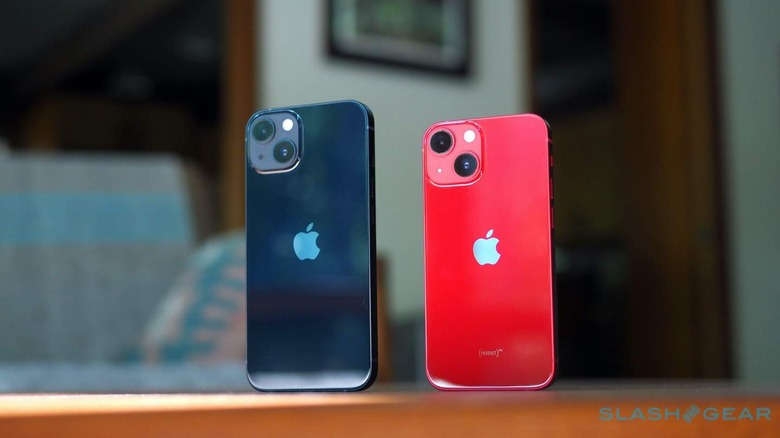
2021's colors run from straightforward Starlight (basically white and silver), Midnight (a very deep blue-black), Blue, Pink, and (PRODUCT)RED. IP68 water and dust-proofing is standard. Gone is the unlovable 64GB configuration, with 128GB, 256GB, and 512GB versions to choose between; if you want more storage, you'll need either an iPhone 13 Pro or an iCloud subscription.
The iPhone 13 feels both familiar and new. Apple's industrial design remains pleasingly tactile and – with Ceramic Shield front glass and a sturdy aluminum frame – the company says it's up to the rigors of daily life, too. That said, I suspect most people will want to cosset it in a case, while the few fine scratches I got on last year's Ceramic Shield display suggests a screen protector may not be a bad idea.
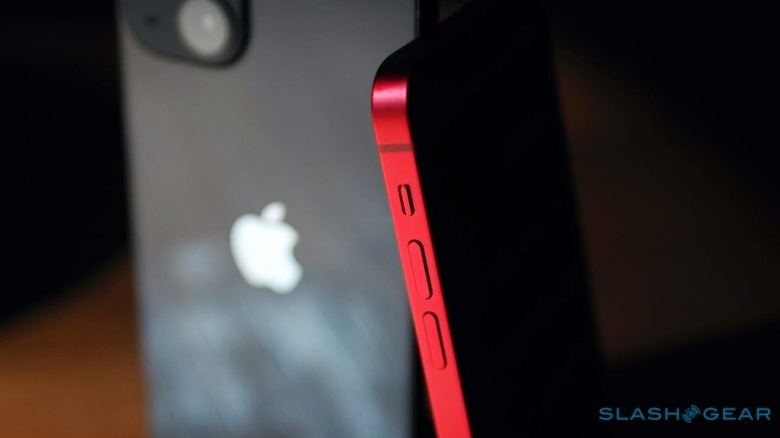
The iPhone 13 mini, meanwhile, still surprises me whenever I pick it up. Admittedly, I usually carry Apple's largest, Max-size smartphone, but even against the regular iPhone 13 this smaller version feels bizarrely compact.
Like last year, it surfs a wavering line between pocket-friendliness and usability. It's only really when it comes to typing that I start to find myself wishing for a bigger touchscreen, relying more on autocorrect – for better or worse – than outright accuracy on iOS' diminutive keyboard. There's only so much you can do on a 5.4-inch, 2340 x 1080 display, even if it looks bright and rich behind the fat fingers you'll be cursing.
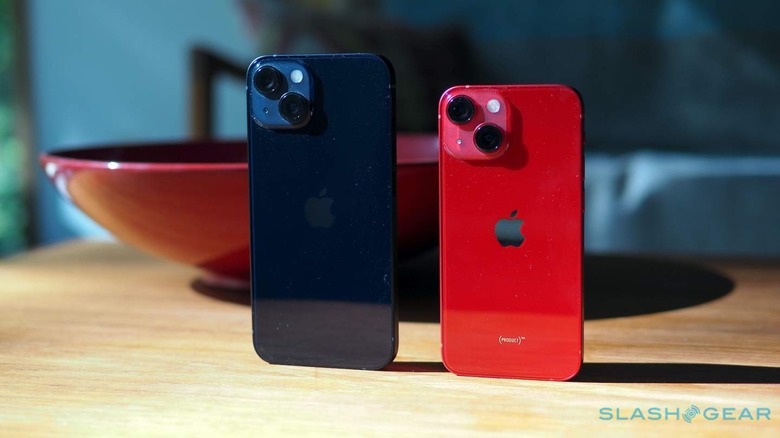
The 6.1-inch iPhone 13, meanwhile, runs at 2532 x 1170. Both support HDR, True Tone color adjustment according to the ambient lighting, and between 800 nits and 1,200 nits of maximum brightness, content-depending.
Sadly there's no ProMotion 120Hz screen refresh here; that's saved for the "Pro" versions. Instead, you get a regular 60Hz panel as Apple has used before. It looks fine, up until the point where you use an iPhone 13 Pro, and then you start to notice the differences.
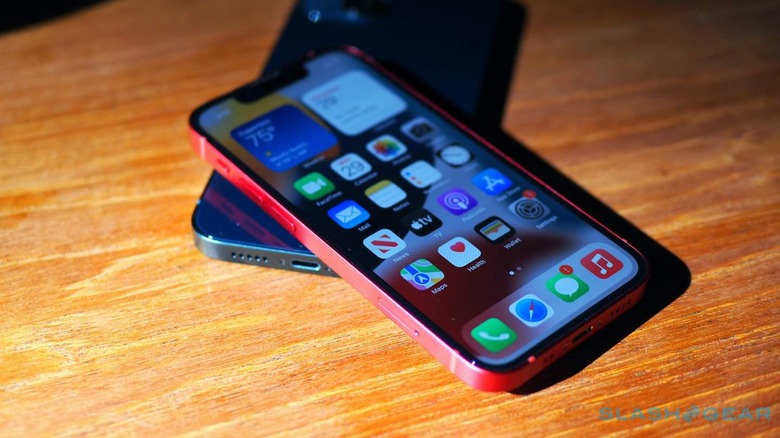
The same "you don't know what you're missing until you see what you're missing" issue goes for the chipset. Apple's A15 Bionic lacks a graphics core here, with six CPU and four GPU cores. All the same, you'll need to be trying to do some visually-intensive stuff to actually have that be a problem, and day to day iOS 15 on the iPhone 13 has been no slower than the iPhone 13 Pro felt.
What I missed more was the telephoto camera. As in 2020, there are two cameras to choose between: a 12-megapixel wide, and a 12-megapixel ultra-wide. The former has an f/1.6 aperture lens and optical image stabilization, while the latter gets an f/2.4 lens, 120-degree field of view, and lens correction to avoid curvy edges.
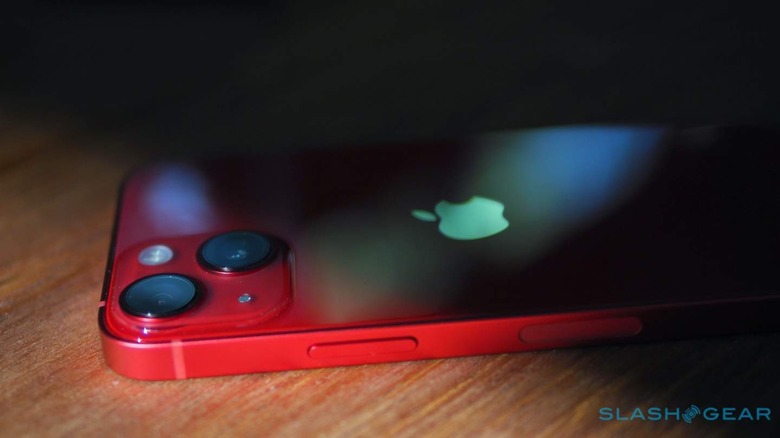
There's a 5x digital zoom, which is okay at lower magnification levels, but I continue to wish Apple included an optical telephoto instead of the wide angle. Like the more expensive iPhone 13 Pro there's the upgraded Night mode, Smart HDR 4, and Photographic Styles; the latter work like computational filters, as though you've screwed a filtering glass to the front of your DSLR. The upside is that the result typically looks much more natural than, say, an Instagram filter; the downside is that you need to choose it before you shoot, and there's no way to change it afterwards.
The improvements in still shots aren't quite as noticeable as they are for the iPhone 13 Pro, but there's still a lot to like about images out of the iPhone 13. Natural colors and not overly intrusive processing make for eminently usable pictures. If there's a problem, it's that you could say much the same about the iPhone 12 and iPhone 12 mini, and if you've been counting on photography as your main justification to upgrade, you probably want to wait for 2022 (or go Pro instead).
As for video, there's Dolby Vision HDR recording at up to 4K/60, and Apple's new Cinematic mode to add artificial depth-of-field blurring to clips. As on the iPhone 13 Pro, that tops out at 1080p/30, and allows you to adjust the point of focus both during recording and later on as you edit the footage. It struggles in lower light conditions, and the editing process itself can be fiddly, but it's a fun thing to play with nonetheless. I'm just not sure it's quite at the "be a grown-up cinematographer" stage that Apple seems to want to bill it as yet.
On the front, the TrueDepth camera is narrower, slimming the notch that seems to infuriate some people still. Selfies look fine, Face ID still works great unless you're wearing a mask, and the absence of Touch ID still rankles.
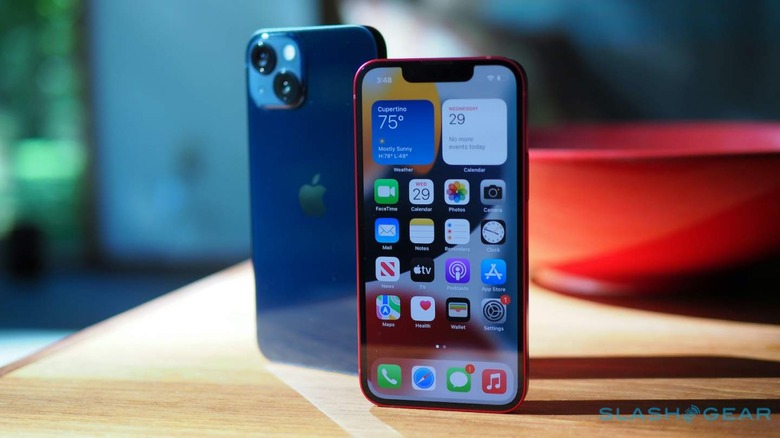
My biggest concern – like a lot of people – was battery life. It seems to have been a focus for Apple, too, given the big longevity boasts it made during its unveil event. Partly that's down to software optimizations, but Apple also managed to squeeze slightly larger batteries inside both phones, too.
For the iPhone 13, it's the difference between keeping an eye on the battery meter and being confident that you can make it through the day without concern. The iPhone 12 mini, though, always felt more precarious, and many discovered that an early evening top-up was not the exception but the rule.
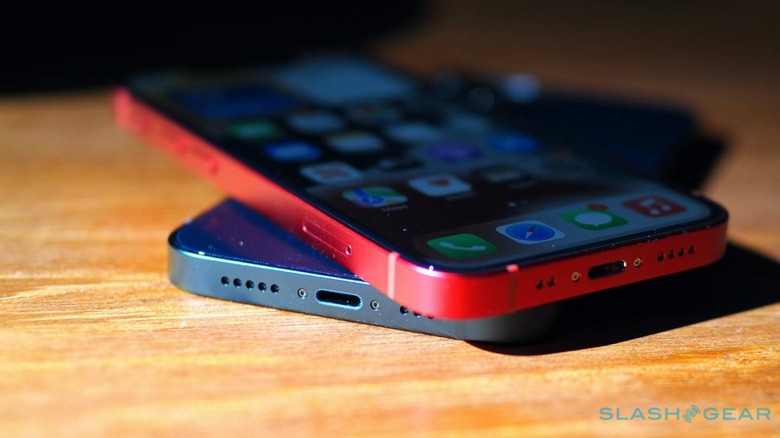
The iPhone 13 mini tackles that head-on, and it makes a huge difference to how user-friendly the smallest phone feels. Apple has coaxed a few hours more from the handset, enough that you don't need to always be checking for the nearest outlet or charger. Sure, extensive camera use or gaming will still take its toll, but battery is no longer the Achilles heel that it once was.
Elsewhere, many of the improvements the iPhone 13 Pro enjoys have been carried over to these more affordable devices. There's dual eSIM support – you do lose access to the physical SIM slot if you activate both eSIMs, mind – together with 5G in both Sub-6GHz and mmWave flavors. WiFi 6, Bluetooth 5.0, and MagSafe charging are present and correct.
iPhone 13 Verdict
Clearly, high among the appealing factors of the iPhone 13 and iPhone 13 mini is the pricing: these are both considerably cheaper than Apple's "Pro" phones. Your money gets you a near-identical iOS 15 experience, dependable cameras, and a welcome improvement in battery life. Apple still may not include a charger in the box, but double the base iPhone storage is a great consolation.
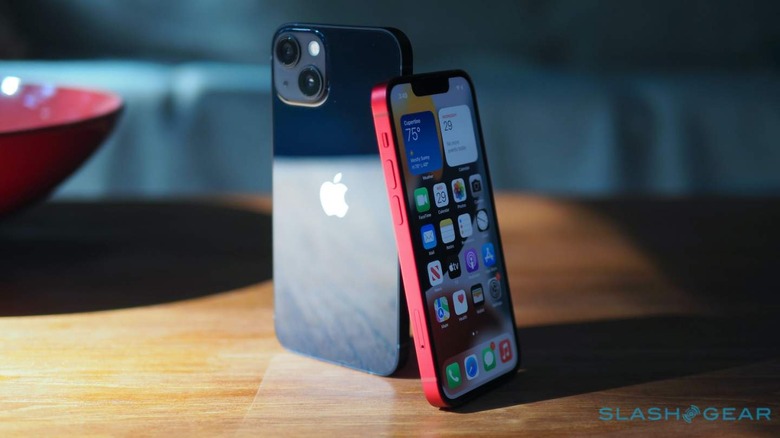
All the same, I find myself thinking that for many – certainly those who want to see the bulk of Apple's 2021 refinements – the iPhone 13 Pro would be a sensible upgrade. Yes, at $999 it's $200 more than the iPhone 13, but the beautiful ProMotion display and significant uptick in photographic capabilities are stars of the show here. They're things you just plain miss out on with Apple's cheaper devices.
Like last year, the iPhone 13 is probably the right pick for most people. Unlike last year, the iPhone 13 mini doesn't make too many compromises to recommend it to only those seriously devoted to smaller phones. Looming over all of that, though, is the reality that the gap between the iPhone 13 and the iPhone 13 Pro feels considerably wider this time around, making that step up a far more rewarding investment.










